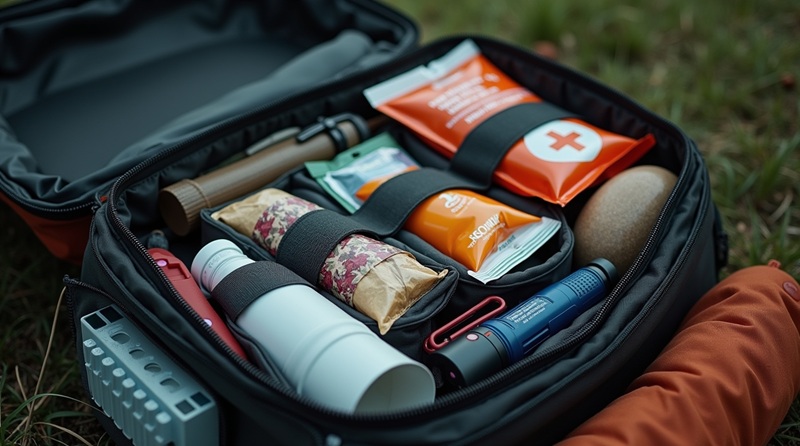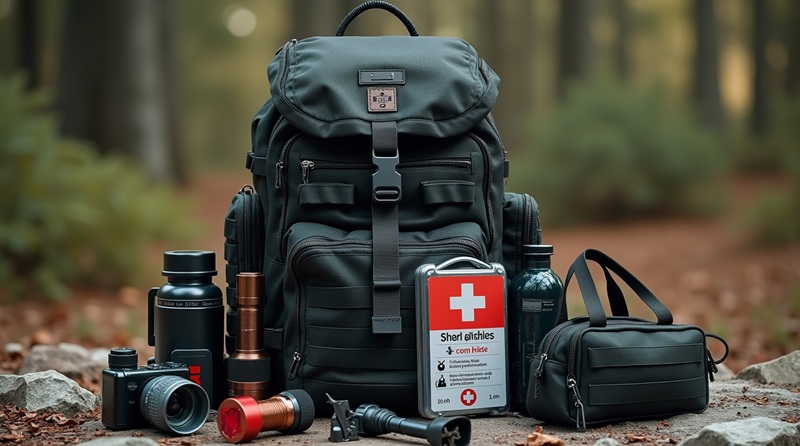Fire, massive power outage, flood, or health crisis… Nobody likes to imagine these scenarios, but preparing for them helps maintain control when the time comes. The 72-hour evacuation bag (or bug-out bag) is designed to ensure your survival and that of your family for three days, the time it takes for the situation to stabilize or for you to reach a safe place.
This guide details the essential contents of a 72-hour bag, common mistakes to avoid, and a selection of the best ready-to-use bags in 2025.
Why a 72-Hour Bag is Essential
- Immediate autonomy: everything is ready, no thinking needed.
- Quick reaction: every minute counts in an emergency evacuation.
- Versatility: useful for natural disasters or other emergency crises.
- A well-prepared bag is a vital insurance for your loved ones’ safety.
Essential Items for an Evacuation Bag
Water and filtration
- Minimum 3 liters per person in bottles or flasks.
- Portable filter (Sawyer Mini or LifeStraw type).
- Purification tablets (Aquatabs).
Food
- Freeze-dried rations or MRE (Meals Ready-to-Eat).
- Long-lasting energy bars.
- Portable stove + compact fuel.
Health and hygiene
- Complete first aid kit.
- Personal medication + prescriptions.
- Masks, hand sanitizer, soap sheets, wipes.
Energy and communication
- LED headlamp + spare batteries.
- Solar external battery.
- Emergency radio (NOAA/AM/FM).
- Backup phone or long-range walkie-talkie.
Clothing and protection
- Technical clothing suited to local climate.
- Waterproof poncho and survival blanket.
- Sturdy gloves and shoes.
Tools and miscellaneous equipment
- Multitool knife (e.g. Leatherman).
- Firestarter + lighter.
- 550 paracord.
- Strong tape and sewing kit.
- Cash in small bills.
Additional equipment based on needs
- Families: diapers, infant formula, travel games for children.
- Pets: food, collapsible bowl, veterinary documents.
- Cold regions: 4-season sleeping bag, hand warmers.
- Hot regions: cap, sunscreen, electrolytes.
Common Mistakes to Avoid
- Bag too heavy: prioritize essentials, don’t pack 30 kg of material.
- Equipment never tested: better to try your stove and water filter before the crisis.
- Forgetting personalization: a standard bag must be adapted for each family member.
- Poor maintenance: regularly check batteries, medicines, and supplies.
- Ignoring comfort: an uncomfortable bag is unusable for several days.
Examples of Ready-to-Use 72h Bags in 2025
- Sustain Supply Premium Kit
For 2 or 4 people, includes food, water, medical kit, lights, and tools. Ergonomic and durable backpack. - Emergency Zone Urban Survival Bug-Out Bag
Urban-focused with enhanced communication and hygiene gear, compact and easy to carry. - Military Tactical 72h Bag (customizable)
Robust base with several compartments to build your own kit based on needs.
FAQ on the 72-Hour Evacuation Bag
Water, food, blankets, first aid supplies, appropriate clothing, communication devices, and multitools.
Choose multifunctional items, prioritize lightweight materials, and regularly test to remove unnecessary duplicates.
Check all equipment twice a year, test items, replace expired supplies, and maintain clothing.
It should be adapted according to location: adjust contents for cold, heat, humidity, or altitude to ensure comfort and efficiency.
Conclusion
A 72-hour evacuation bag is not a luxury; it is a necessity for anyone concerned with protecting their loved ones in the face of the unexpected. By preparing it now, you gain a valuable asset: time.




